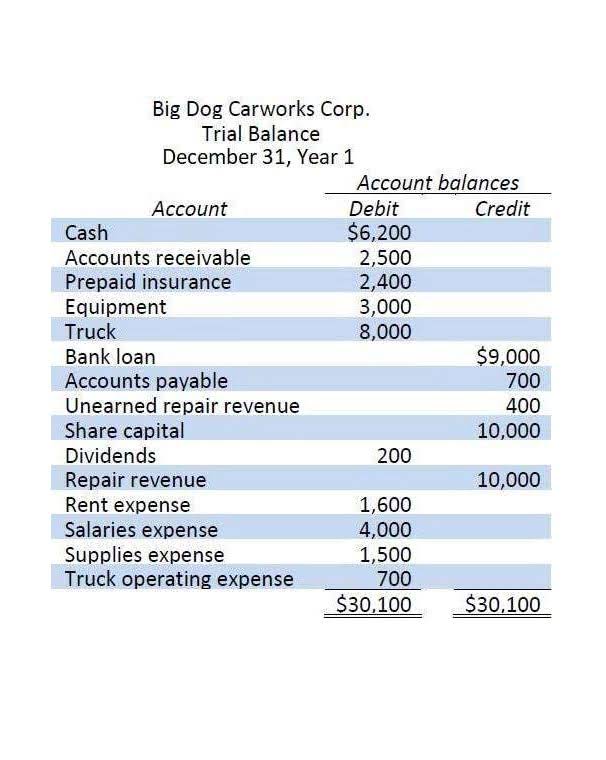
For example, John Smith may own a landscaping company called John Smith’s Landscaping, where he performs most — if not all — the jobs. Drawings are amounts taken out of the business by the business owner. Accountingo.org aims to provide the best accounting and finance education for students, the accounting equation may be expressed as professionals, teachers, and business owners. Think of retained earnings as savings, since it represents the total profits that have been saved and put aside (or “retained”) for future use. Debt is a liability, whether it is a long-term loan or a bill that is due to be paid.
How Does the Double Entry Accounting System Work?
We begin with the left side of the equation, the assets, and work toward the right side of the equation to liabilities and equity. A business can now use this equation to analyze transactions in more detail. But first, it may help to examine the many accounts that can fall under each of the main categories of Assets, Liabilities, and Equity, in terms of their relationship to the expanded accounting equation.

Liabilities = Assets – Owner’s Equity
The normal balance for the equity category is a credit balance whereas the normal balance for dividends is a debit balance resulting in dividends reducing total equity. The accounting equation uses total assets, total liabilities, and total equity in the calculation. This formula differs from working capital, based on current assets and current liabilities. For a company keeping accurate accounts, every business transaction will be represented in at least two of its accounts. For instance, if a business takes a loan from a bank, the borrowed money will be reflected in its balance sheet as both an increase in the company’s assets and an increase in its loan liability.

Accounting Equation’s Effects on Business Transactions
Capital essentially represents how much the owners have invested into the business along with any accumulated retained profits or losses. The capital would ultimately belong to you as the business owner. Understanding how the accounting equation works is one of the most important accounting skills for beginners because everything we do in accounting is somehow connected to it. The global adherence to the double-entry accounting system makes the account-keeping and -tallying processes more standardized and foolproof. During the month of February, Metro Corporation earned a total of $50,000 in revenue from clients who paid cash. With Deskera you can automate other parts of the accounting cycle as well, such as managing inventory, sending invoices, handling payroll, and so much more.
- The balance of the total assets after considering all of the above transactions amounts to $36,450.
- Simply put, the rationale is that the assets belonging to a company must have been funded somehow, i.e. the money used to purchase the assets did not just appear out of thin air to state the obvious.
- Not all companies will pay dividends, repurchase shares, or have accumulated other comprehensive income or loss.
- When the total assets of a business increase, then its total liabilities or owner’s equity also increase.
- Under the double-entry accounting system, each recorded financial transaction results in adjustments to a minimum of two different accounts.
- The most common sources of revenue are the sale of goods and services, the leasing of real estate, the provision of financial loans, commissions, fees, interest, royalties, dividends, and rent.
For example, the use of raw materials and packaging materials are both considered to be part of internal transactions. For example, purchases, wages, salaries, electricity bills, interest expenses, depreciation, taxes, and so on. For example, cash, inventory, furniture, machinery, buildings, goodwill, etc. It is applicable to businesses of all sizes, from sole proprietorships like neighborhood grocery stores to multinational conglomerates like Google. ABC & Co. has liabilities of $3.2 billion and owners’ equity of $14.3 billion.
Assets Always Equal Liabilities Plus Equity
Cash includes paper currency as well as coins, checks, bank accounts, and money orders. Anything that can be quickly liquidated into cash is considered cash. Cash activities are a large part of any business, and the flow of cash in and out of the company is reported on the statement of cash flows. Due to the purchase of goods, the asset (cash) decreases by $12,000, and the owner’s equity (expenses) decreases by $12,000. The relationship between assets, liabilities, and owner’s equity can be expressed as an equation, as will be shown in the following example.
- Machinery is usually specific to a manufacturing company that has a factory producing goods.
- Now, these changes in the accounting equation get recorded into the business’ financial books through double-entry bookkeeping.
- The normal balance for the equity category is a credit balance whereas the normal balance for dividends is a debit balance resulting in dividends reducing total equity.
- It is equal to the combined balance of total liabilities of $20,600 and capital of $15,850 (a total of $36,450).
- Accounting software is a double-entry accounting system automatically generating the trial balance.
Accounting equation: More examples and explanation
Additionally, it doesn’t completely prevent accounting errors from being made. Even when the balance sheet balances itself out, there is still a possibility of error that doesn’t involve the accounting equation. Creating the balance sheet statement is one of the last steps in the accounting cycle, and it is done after double-entry bookkeeping. Before getting into how the accounting equation helps balance double-entry bookkeeping, let’s explain each element of the equation in detail. The owner’s equity is the share the owner has on these assets, such as personal investments or drawings.
